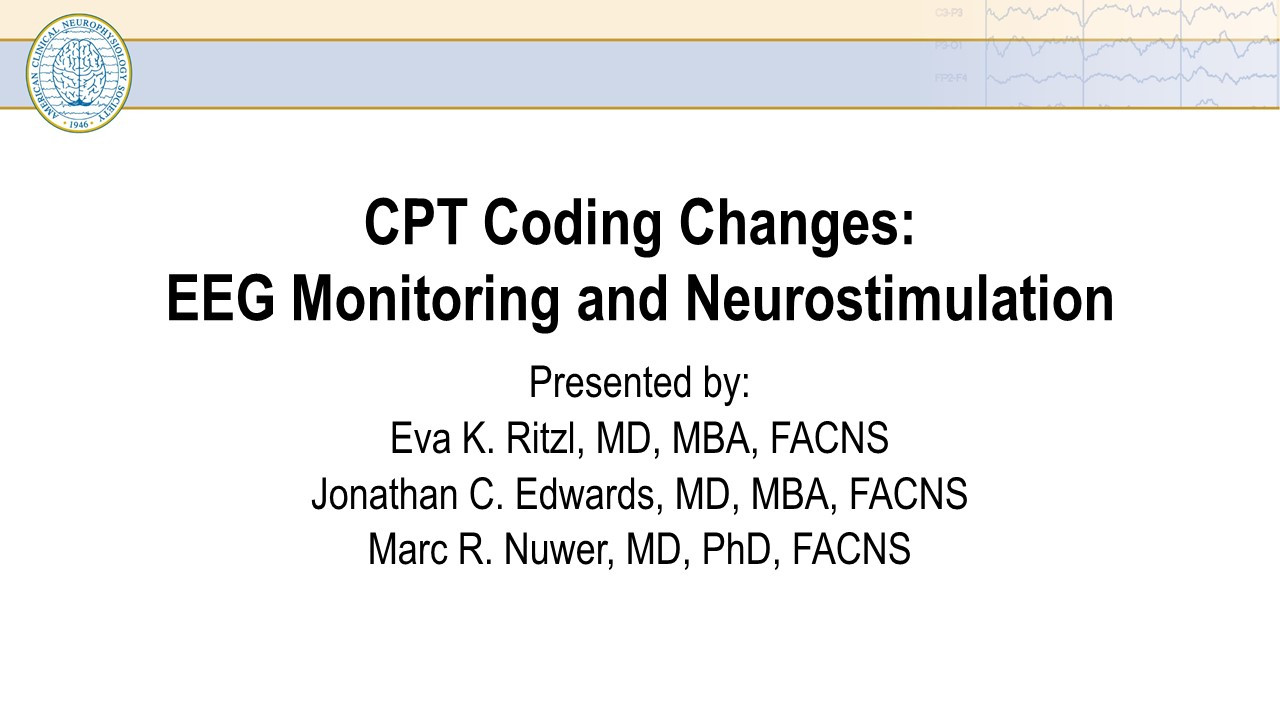

#Eeg cpt code code#
ĪMA CPT code descriptions for these ED E&M codes include a statement about the patient’s presenting problem. For the two highest level codes the presenting problems are usually of high severity: Each level of ED E&M service requires all three key components of history, examination and medical decision-making (MDM) to “meet or exceed the stated requirements” for the level of service reported. The American Medical Association (AMA) Current Procedural Terminology (CPT) has five levels of ED E&M services, defined by the five CPT codes in the range 99281-99285. Since the onset of the COVID-19 period there has been a trend of increasing use of complex emergency department (ED) evaluation and management (E&M) procedure coding, with diagnosis codes that do not immediately indicate an emergency department level of care might be needed. “(A) Emergency services should be defined as those health care services that are provided in a hospital emergency facility after the sudden onset of a medical condition that manifests itself by symptoms of sufficient severity, including severe pain, that the absence of immediate medical attention could reasonably be expected by a prudent layperson, who possesses an average knowledge of health and medicine, to result in: (1) placing the patient’s health in serious jeopardy (2) serious impairment to bodily function or (3) serious dysfunction of any bodily organ or part.” The American Medical Association Access to Emergency Services Policy H-130.970 recognizes the following: At the same time we have seen an increase in free-standing emergency room facilities. There continue to be hospital-based emergency departments with typical ground and air ambulances delivering patients with serious illnesses including myocardial infarction, traumatic injury and stroke. In recent years there has been a change in how some emergency care services are delivered.


 0 kommentar(er)
0 kommentar(er)
